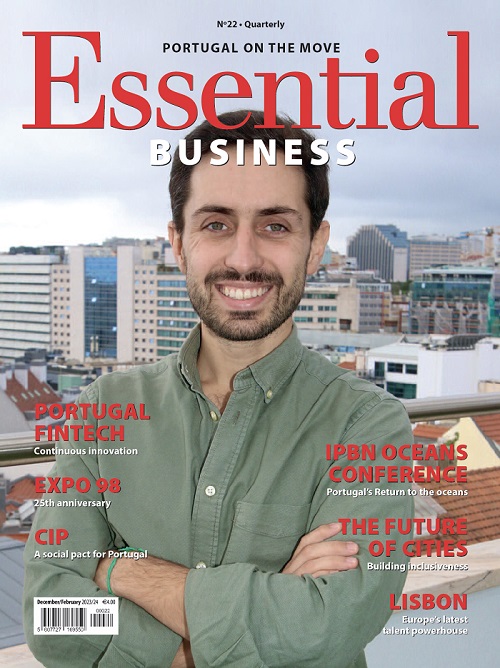Farfetch shares worth little more than jellybeans
By the time Portuguese luxury goods retailer Farfetch withdrew from the New York Stock Exchange after being sold to South Korean company Coupang, its shares had tumbled 96.79% in value to mere cents.
Shares from Portugal’s first unicorn were trading for just US$0.64 dollars on December 15; not even enough to buy a bag of jellybeans in a candy store. (US$0.80 per pound)
And for there to be no doubts as to the future, the company has made it clear to shareholders that they “will not be able to recover any of their investments”.
Small shareholders had been trying to sell their shares ‘over the counter’ on the open market even though they had made huge losses, just to draw a line under the whole sad and sorry chapter.
Farfetch’s exit from the stock market was part of an agreement Farfetch made with Coupang – one of the largest online fashion retail sites in South-East Asia – and the fund Greenoaks to sell the company’s assets and businesses lock, stock and barrel.
According to Negócios, one such small investor, Cristiano Ferreira sold Farfetch shares for just US$0.04 each. In February he had purchased 1,082 shares at €6.80 each. The goal had been to make capital losses in 2023 to “offset capital gains made on other sales” and only heard it was possible through “international forums”.
However, the bank he’d contracted to sell the shares couldn’t sell them. According to the President of the Association of Investors and Capital Markets Professional Analysts (ATM), Octávio Viana, another investor sold each share in the company founded by José Neves for “close to zero” “with the aim of filing losses” that could be offset against taxes on other capital gains.
Founder José Neves, who only held 0.11% of the company’s shares, apologised to staff at the unicorn after teams that worked in partnership with investor Richemont all lost their jobs. The entrepreneur will continue on at Farfetch in a non-executive capacity while the rest of the team still at the company will continue on with “business as usual”. However, major restructuring may imply more job losses this year.
Farfetch managed to get a US$500 million bailout from Coupang to avoid bankruptcy, but José Neves effectively lost control of the company he founded in 2007 as an e-commerce marketplace for luxury boutiques around the world.
Coupang Marketplace offers a similar service where sellers are able to directly access its active customer data base of over 20 million. In a nutshell, it is a cross-border e-commerce company where global businesses ship directly to their customers in Korea.
Farfetch had expanded rapidly up until 2019 as demand for luxury new and second-hand goods mushroomed in markets in China and Russia.
But the post Covid-19 and the subsequent economic downturn in China and sanctions placed on Russia after its 2022 invasion ultimately saw demand plummet.
Farfetch’s troubles can also be chalked up to its marketplace relying heavily on discounts to attract customers, its platform solutions business lacking momentum, and its owned brands like Off-White and Palm Angels losing market share.
In fact its financial woes have been years in the making with some analysts arguing that the signs of the inevitable downfall of the unicorn had been on the cards for a while.
In short its spending on marketing was unsustainable in its bid to stave off market competitors. For instance, Farfetch significantly ramped up its spending – making profitability ever-more-elusive – in the wake of its IPO.
According to Bloomberg, Farfetch “burned through at least $1Bn in cash since [its] listing.” This raised red flags among investors, including Condé Nast, which is said to have been so “concerned the amount of money Farfetch was spending on marketing” that it dumped its £234 million stake in the company in July 2019.
Investors were also worried about Farfetch moving away from its core business of providing a marketplace platform for luxury brands to sell their goods. This was further complicated by the fact that this proved to be a particularly difficult model to carry out even with borrowings of US$1.6Bn according to Bloomberg’s calculations.
Then the Financial Times referred to “cracks in the company’s business model”. These cracks were initially papered over by Covid-19 as successive lock-downs encouraged the bored rich to abandon shopping malls and click on-line providing platform-based companies like Farfetch with an initial boom in business that was largely illusory and unsustainable long term once the pandemic had ended.
For the three months ending on December 31, 2021, for example, the company reported sales growth of 32.9% to €158.6 million, and hit profitability for the first time, making good on its “promise that the uplift from COVID will help it deliver its first annual profit (on an adjusted basis)” in 2021, as the FT stated. Farfetch subsequently revealed that its gross merchandise value for 2022 “nearly doubled” from the onset of the pandemic to $4.1Bn.
However, once the pandemic ended and the world’s economy slumped, these unsustainable revenues slowed, and failed to offset the massive investments the company borrowed for marketing campaigns, with nervous investors pulling the rug from under the company in a cautionary tale of what happens to a company that grows to much too quickly while veering away from its core business model.










